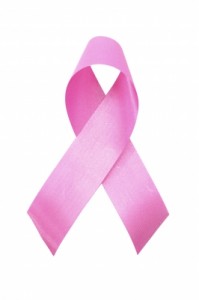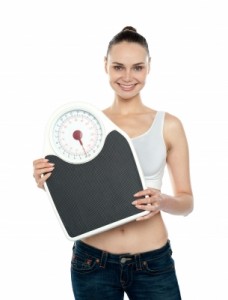 Dr. Gabriel Chouchani has made the difficult decision to retire from private practice as of May 15, 2015. He is an expert in the field of obstetrics and gynecology and will certainly be missed by both his staff and many dedicated patients. He plans to relax, travel and visit his children and grandchildren. We wish him the best of luck in all his future endeavors.
Dr. Gabriel Chouchani has made the difficult decision to retire from private practice as of May 15, 2015. He is an expert in the field of obstetrics and gynecology and will certainly be missed by both his staff and many dedicated patients. He plans to relax, travel and visit his children and grandchildren. We wish him the best of luck in all his future endeavors.
We would like to welcome our new Nurse Practitioner, Jenna Goldsmith, who will start seeing patients at all three of our locations beginning October 1, 2015. Jenna studied at State University of New York at Buffalo and Graduated in May of 2006 as a Nurse. She received her Board Certification as a Nurse Practitioner in Women’s Health in 2008 and has been actively practicing in gynecology, obstetrics and women’s health care. She comes with much experience and is a wonderful addition to our Practice!
Call 716-633-6363 today to schedule an appointment with her at one of our three locations.
More
 Have you ever had one of those days where everything seems to go wrong? Your car won’t start, it starts to rain and you don’t have an umbrella, you forget your coffee or your lunch or you can’t find your keys… of course you have. We all do! But next time your day starts to go wrong, try one or more of these proven ways to boost your mood and make you feel better instantly.
Have you ever had one of those days where everything seems to go wrong? Your car won’t start, it starts to rain and you don’t have an umbrella, you forget your coffee or your lunch or you can’t find your keys… of course you have. We all do! But next time your day starts to go wrong, try one or more of these proven ways to boost your mood and make you feel better instantly.
- Turn on Some Tunes. Whether on your car radio or your iPod, put on some music and dance or sing along! (yes, you can dance in the car. Carefully.) A 2003 study in the journal Psychology and Education found that people who listened to music of any kind were instantly happier, calmer and more relaxed. If you’re stressed, music can calm your nerves—literally! It’s the music itself—not the lyrics—that affects mood. So listen to something with an upbeat rhythm and melody.
- Do Unto Others. Try doing something nice for others. Buy a cup of coffee for the person behind you in line at the drive-through, donate to a cause or volunteer your time. Spending as little as $5 on someone else can help you experience increased feelings of satisfaction, according to a 2008 study in the journal Science. And when researchers analyzed 37 studies on volunteering, they found that people who offered their time had a better sense of well-being, were happier with their lives and were less likely to feel sad and anxious.
- Get Outside. Even when the weather is lousy, spend at least five minutes outdoors to help chase your blues away. Appreciate the sun, the snow, the rain or wind, whichever you’re experiencing. And if at all possible, take a quick walk. Research has proved that performing a low-intensity workout outside for even just five minutes can raise your self-esteem and mood levels. Take a walk around the block to calm down and get a positive outlook on life.
- Look Through Pictures That Will Make You Smile. Believe it or not, researchers from the United Kingdom found that looking at happy photos beat out chocolate, wine and watching TV when it comes to lifting your mood. Go through your Facebook feed or go through old photo albums to reminisce over happy times in your life.
- Take a Break From the World. Have you ever meditated or done yoga? If not, try! Sometimes, to boost your mood, you just need a quiet place to breathe. And study after study has shown that meditation can ease anxiety and increase positivity in your mood. Regular yoga practitioners have been found to have higher levels of depression-fighting neurotransmitters. Both practices require you to turn off the outside world to focus on your breaths and your thoughts, which may help you rationalize and rebalance after something has thrown you for a loop.
Chouchani, Sayega and Bagnarello MD cares about your overall health including your mental health. If something feels off or not right, please discuss it with us at your next appointment or make an appointment today.
More
 You may have heard by now that if you live north of the Mason-Dixon line, your body can’t make enough Vitamin D for nearly 6 months of the year. From approximately November through March, sunlight is insufficient to stimulate the production of Vitamin D in skin. Why should you care?
You may have heard by now that if you live north of the Mason-Dixon line, your body can’t make enough Vitamin D for nearly 6 months of the year. From approximately November through March, sunlight is insufficient to stimulate the production of Vitamin D in skin. Why should you care?
Because Vitamin D deficiency has been linked to increased risk of asthma, cancer, heart disease, diabetes and seasonal affective disorder, among other conditions. We also need it for healthy bones. And unlike almost any other nutrient, you can’t get enough Vitamin D from food alone no matter how well you eat.
Other Sources of Vitamin D
When you can’t get enough sunlight to make Vitamin D on your own, you have to turn to other sources. Very few foods naturally contain Vitamin D. Fatty or oily fish such as salmon, tuna, and mackerel provide some, and small amounts of the vitamin are found in beef liver, cheese, and egg yolks. Some dairy products like milk and yogurt and even some juices and cereals are fortified with D.
However, most people have to turn to supplements during the winter months, or during the summer months if you spend most of your time inside. The amount you take will depend on many factors, including where you live, your age, whether you use sunscreen, and the color of your skin. You should always consult with a doctor before taking any vitamin supplement, so you don’t make yourself ill by taking too much or waste your money by taking too little to be helpful.
Vitamin D and Women’s Health
Pregnant women need extra Vitamin D: it supports healthy bone development in the baby, and deficiency is related to preeclampsia for the mother. The average prenatal vitamin doesn’t contain enough Vitamin D, so be sure to ask your OB-GYN if you need additional supplementation.
And if you’re trying to get pregnant and struggling with infertility? Vitamin D deficiency may be playing a role. Be sure to ask your doctor to test your levels if you are having difficulty conceiving.
If you’re looking for an OB/GYN practice that cares about your overall health, call to make an appointment at one of Chouchani, Sayegh and Bagnarello’s three locations. We look forward to meeting you!
Photo courtesy of freedigitalphotos.net.
More
 October is breast cancer awareness month. Throughout this month, Chouchani, Sayegh and Bagnarello MD will be posting articles about breast cancer prevention and what to do post diagnosis. This week we are focused on early detection.
October is breast cancer awareness month. Throughout this month, Chouchani, Sayegh and Bagnarello MD will be posting articles about breast cancer prevention and what to do post diagnosis. This week we are focused on early detection.
Breast cancer is a disease that occurs when malignant (bad) cancer cells form in the tissue of the breast. One in eight women will be diagnosed with breast cancer during their lifetime and breast cancer is the most commonly diagnosed cancer in women. While breast cancer is the second leading cause of death in women, it can also occur in men with an estimated 2,150 men diagnosed per year.
However, according to the National Cancer Institute, when detected early in the “localized stage,” the five-year survival rate for breast cancer is 98%.
Early detection is easiest when you know the signs and symptoms of breast cancer while also performing regular self-exams.
Signs and symptoms to watch for:
- Nipple tenderness
- Thickening lump in the breast or underarm area
- Change in the skin around the breast or nipple, or enlargement of the skin’s pores
- Lump in the breast or a change in the shape or size of the breast
- Dimples anywhere on the breast
- Unexplained swelling or shrinkage of the breast (especially limited to one side)
- Nipple turned inward or inverted
- Red, swollen or scaly skin around the breast, nipple or areola
- Any clear or bloody nipple discharge
Most people experiencing signs and symptoms will only experience two or three and that does not mean they automatically have breast cancer. If you are experiencing any of the signs or symptoms, or feel any sort of unexplained lump in the breast or armpit area, contact your physician immediately.
Self-exams are extremely important especially concerning early detection. For further instruction on performing self-exams, see a previous article here, or you can find more information on the website for the National Breast Cancer Foundation here. Self-exams should be performed at home about once a month.
A clinical exam can be performed by a healthcare professional in-office during an appointment or during an annual exam or physical. Healthcare professionals will check the breast and armpit for lumps while also checking the skin for abnormal coloration, texture or discharge.
Mammograms are conducted by taking an x-ray of the breast tissue to examine the tissue for suspicious clusters, flecks, growths etc. Women over 40 should have a mammogram every one to two years, while women under 40 with risk factors should ask their healthcare professional what’s best.
The National Breast Cancer Foundation also offers an Early Detection Plan which is available for iPhone and Android on the App Store and on Google Play. The EDP reminds users to do monthly self-exams with notifications on their phones, tablets or computers and also aids in scheduling clinical breast exams and mammograms. For more information, visit their website here.
Reducing the risk of breast cancer can be as simple as maintaining a healthy weight, staying physically active, maintaining a healthy diet, and limiting alcohol and tobacco consumption. Early detection leads to the greatest possibility for efficient and successful treatment.
For more information on breast cancer, visit our patient education section here. And if you’d like to make an appointment with any of our doctors, please give us a call today. We are accepting new patients in all three of our offices in Western New York!
More
Did you know that other than the cesarean section, a hysterectomy is the most common surgical procedure performed on women? And what used to be an extremely invasive procedure can now be done robotically through small minor incisions.
What is a hysterectomy?
A hysterectomy is the surgical removal of the uterus.
Here are a few of the most common reasons why a woman would have a hysterectomy:
- Benign fibroid tumors – Non-malignant tumors can grow and become large. This may inflict pressure on other organs. Fibroids can cause heavy bleeding and/or pelvic pain.
- Cancerous tumors – About 10% of hysterectomies are performed to treat cancers such as cervical, ovarian, or endometrial.
- Uterine prolapse – Uterine prolapse occurs when pelvic floor muscles and ligaments stretch and weaken, providing inadequate support for the uterus.
- Endometriosis – When endometrial cells grow outside of the uterus they can attach themselves to other organs and bleed each month. A woman can experience pelvic pain, pain during sex, and prolonged or heavy bleeding.
- Long-term abnormal uterine bleeding
- Chronic pelvic pain
Are you a good candidate?
If you have any of the above conditions or symptoms, it’s important to talk with your doctor. Drs Chouchani, Sayegh and Bagnarello can help you determine the best course of action for your individual needs. It’s important to remember that for women who have not reached menopause, having a hysterectomy means that menstruation will no longer occur, and pregnancy will no longer be possible.
At Chouchani, Sayegh and Bagnarello we perform the Robotic Hysterectomy with the da Vinci®Surgical System. Using this cutting edge technology, we are able to dramatically decrease pain and speed up the recovery process. Through tiny, 1-2 cm incisions, our surgeons using the da Vinci System can operate with greater precision and control, minimizing the pain and risk associated with large incisions while increasing the likelihood of a fast recovery and excellent clinical outcomes.
Find out more about what you should expect before, during and after a robotic hysterectomy.
Are you a candidate for this type of surgery? Find out more about this amazing procedure. Or call our office at (716) 633-6363 for details.
More
 It’s important for women to achieve and maintain a healthy weight, to prevent related medical issues. But what if you’re not at a healthy weight? How can you get there without resorting to dietary fads and potentially dangerous supplements?
It’s important for women to achieve and maintain a healthy weight, to prevent related medical issues. But what if you’re not at a healthy weight? How can you get there without resorting to dietary fads and potentially dangerous supplements?
Losing weight boils down to two things: eating less and moving more. The combination of cutting calories and increasing activity is the only proven way to drop the pounds. Best of all? It’s easy if you know how. Here are 8 simple tips that will help you cut or burn extra calories and lose about a pound of weight a week—without feeling deprived or obsessing about calorie counting.
- Make Smart Food Swaps. If you trade in your morning bagel for an English muffin, you’ll slash 220 calories. Using one whole egg and two egg whites to make an omelet and switching pork sausage for turkey sausage will cut about 125 calories each for a protein-packed breakfast.
- Know How Many Portions You Eat. When you check the calorie count on an item, check the portion size also. Something may be 100 calories a portion, but you may be eating 5 portions at a time. Taking the time to measure out one serving can save you hundreds of calories.
- Make Sure To Move. Do you take a lunch hour? Just taking a walk every day for an hour can burn up to 500 extra calories. Or try wearing a pedometer and aim for walking 10,000 steps a day—the equivalent of about 5 miles—and you’ll burn those calories without hitting the gym.
- Surprise Your Tastebuds. Having a sandwich? Use hummus or mustard instead of mayonnaise, and substitute a roll for sliced bread, and you’ll cut about 200 calories. If you order a side, opt for a salad instead of fries to save another 300 calories and fill up on fiber.
- Fool Your Eyes. If you downsize your plate, such as going from a 12-inch to a 9-inch, you’ll cut 500 calories without feeling deprived.
- Stand Up For Yourself. You can burn up to an extra 500 calories a day by standing, rather than sitting, whenever possible! At work, try standing to make a phone call or read a report.
- Drink Water. Drink plenty of water, especially in place of soda or other sugary drinks, which can save you about 300 hundred calories a day if you skip two cans. Also, drinking enough water daily might boost your metabolism so you burn even more calories. Is plain water too boring? Add sliced cucumbers, lemon or limes, or even low-calorie flavor packets.
- Get Enough Sleep. This can be tough, especially for moms, but people who get less than 6 hours of sleep eat up to 300 calories more during the day because that lack of sleep triggers production of your hunger hormone. Each extra hour of sleep could save you 100 calories!
Call Chouchani, Sayegh and Bagnarello if you’d like to work with doctors who truly care about the overall health of our patients.
More
 IUDs are one of the least common forms of birth control in this country—only 2 percent of American women use them—although their success rate is high. Why? Possibly because there is so much misinformation about them.
IUDs are one of the least common forms of birth control in this country—only 2 percent of American women use them—although their success rate is high. Why? Possibly because there is so much misinformation about them.
Basic Information
An IUD, or intra-uterine device, is an object that is placed inside the uterus by a physician. There are three different kinds of IUDs manufactured in the United States today. One type is hormonal and lasts up to five years; the second type delivers a lower dose of hormones and lasts up to three years; and the third uses copper as a spermicide and lasts up to 10 years.
How they work
Non-hormonal IUDs are made from copper, which acts as a natural spermicide. Hormonal IUDs gradually release small doses of synthetic hormones. Both types thicken your cervical mucus, which creates a hostile environment for embryo implantation and prevents pregnancy.
The two main types of IUDs
The two hormonal IUDs are Mirena and Skyla. Mirena lasts up to five years, while Skyla delivers a lower dose of hormones, is slightly smaller, and lasts up to three years.
The copper-coil IUD, ParaGard, slowly releases copper ions for up to 10 years.
IUDs: Busting the Myths
Myth #1: Getting an IUD will make me infertile.
The truth: No, it won’t!
IUDs got a bad rap in the 1970s due to a product called the Dalkon Shield. This plastic IUD’s was badly designed and led to septic miscarriage and even death for some users. IUDs began to be associated with higher risks of infertility and pelvic inflammatory disease.
Doctors know that today’s IUDs do not affect fertility.
Myth #2: IUDs cause infections like Pelvic Inflammatory Disease (PID).
The truth: No, they don’t!
Although IUDs do not protect against sexually transmitted infections (STIs), they can’t cause them. This fear came about due to the lack of rigorous STI testing in previous decades. People would get an STI—or have one prior to the IUD’s insertion—then blame the infection on the device. You still cannot get an IUD if you already have an STI. If your STI status is negative, getting an IUD is extremely unlikely to cause any kind of infection.
Myth #3: IUDs are really expensive.
The truth: IUDs are cheaper than pills in the long run—but must be paid for up front.
It’s hard to estimate what your IUD might cost because there are so many factors, the most significant one being insurance coverage. But research has shown that out of five popular contraceptives, IUDs are the cheapest over five years for both insured and uninsured users.
Is an IUD the right method for you?
Birth control is not one size fits all. Your age, health and other factors come into play. If you would like to discuss your options, please call Chouchani, Sayegh and Bagnarello. We always work with our patients to create the most successful course of care!
More
By admin
13 Jan, 2014
Pregnancy, Women's Health
calcium when pregnant, Dr. Adel Chouchani, Dr. Carola Bagnarello, Dr. Christian Chouchani, Dr. Gabriel Chouchani, Dr. Magdi Sayegh, how much calcium do I need, WNY OB-GYN, women and calcium, women's calcium intake
 Calcium is the most abundant mineral in your body, but you also lose it every day through your skin, nails, hair, sweat, urine and feces—and our bodies cannot produce new calcium on their own. If you don’t get enough for your body’s needs, calcium is taken from your bones, causing osteoporosis.
Calcium is the most abundant mineral in your body, but you also lose it every day through your skin, nails, hair, sweat, urine and feces—and our bodies cannot produce new calcium on their own. If you don’t get enough for your body’s needs, calcium is taken from your bones, causing osteoporosis.
Calcium plays many vital roles in your body, including:
- building healthy bones and teeth and keeping them strong as you age,
- sending messages through the nervous system,
- maintaining healthy blood vessels,
- regulating blood pressure,
- preventing insulin resistance (which could lead to Type 2 diabetes),
- helping your blood clot, and
- regulating your heart’s rhythm.
Obviously, if you want to enjoy good health, you need to make sure you have enough calcium in your diet. And once you understand the basics, it’s not that hard to include it in your diet and get the calcium you need.
Supplements vs. Food
Your body can absorb more calcium from food than it can from supplements, so your calcium intake should come primarily from the food you eat. People who get most of their calcium from food have stronger bones.
Calcium from food often comes with other beneficial nutrients that help calcium do its job, like Vitamin D.
Doctors advise that you get as much of your daily calcium needs from food as possible and use supplements only to make up any shortfall. Older women who get high amounts of calcium from supplements seem to have a higher risk of kidney stones and strokes. And using high-dose calcium supplements may increase your risk of heart disease.
How much calcium is right for you?
The healthiest or safest amount of dietary calcium hasn’t been definitively established. Different scientific approaches have yielded different estimates. To ensure that 95 percent of the population gets this much calcium, the National Academy of Sciences established the following recommended intake levels:
- Age 19 to 50: 1,000 milligrams/day
- Age 50 or over: 1,200 milligrams/day
- Pregnant or lactating adult women 1,000 milligrams/day
Good food sources of calcium
So what foods can you eat to get enough calcium in your diet? You probably know about dairy products, like milk, yogurt, and cheese, but here are some unexpected sources:
- White Beans
- Canned Salmon
- Sardines
- Dried Figs
- Bok Choy
- Blackstrap Molasses
- Kale
- Black-eyed Peas
- Almonds
- Oranges
- Turnip Greens
- Sesame Seeds
- Seaweed
At Chouchani, Sayegh and Bagnarello, we believe in supporting the total health of our patients and our community. If you have any questions about your dietary or nutritional needs, we’d be happy to help. Contact us anytime at any of our three convenient WNY locations.
More
By admin
23 Dec, 2013
Breastfeeding support, Pregnancy
breastfeeding classes Buffalo, breastfeeding classes Western New York, breastfeeding support WNY, Dr. Carola Bagnarello, Dr. Christian Chouchani, Dr. Gabriel Chouchani, Dr. Magdi Sayegh, lactation consultants Buffalo, lactation consultants Western New York, nursing support WNY, WNY OB-GYN
 Everyone thinks that because breastfeeding is natural, that it’s easy. But experienced nursing moms can tell you—it’s not always! If you’re planning to breastfeed, you’re probably going to need some support. Where are your best resources in Western New York?
Everyone thinks that because breastfeeding is natural, that it’s easy. But experienced nursing moms can tell you—it’s not always! If you’re planning to breastfeed, you’re probably going to need some support. Where are your best resources in Western New York?
At the Hospital
When you give birth at Mercy Hospital, Millard Fillmore Suburban, Women and Children’s Hospital of Buffalo or Sisters Hospital, you can expect to receive support from an onsite lactation consultant. Be sure to tell the staff when you arrive that you plan to breastfeed after your baby is born, so they can help you get started correctly, right away.
Most of these facilities also offer breastfeeding classes as part of their preparation courses for new parents-to-be. These classes are taught by experienced, internationally board certified lactation consultants and are designed to help answer common questions and concerns that you may experience during pregnancy. They should prepare you for both the initial breastfeeding experience and what to expect during the first few weeks at home.
At Home
However, we all know that what works one day might not work the next. If you were doing well with breastfeeding at the hospital but things don’t seem to be going right now, or if you just want some reassurance, both Sisters and Mercy hospitals have the Baby Café, a weekly drop-in center where you can get support and guidance from certified lactation consultant nurses.
You can also ask your child’s pediatrician if they have a lactation consultant on staff. Care Connections, a lactation center located in Amherst that serves all eight counties of WNY, provides lactation consultant services for over 35 local pediatricians.
Care Connections also offers home visits by their IBC-certified lactation consultants in addition to onsite breastfeeding consultations. And if you can make the drive to their Amherst location, they rent breast pumps and sell a variety of clothing and accessories designed to make your breastfeeding experience easier.
At Work
If you’ll be returning to work and plan to continue nursing, Millard Fillmore Suburban offers a special class called Breastfeeding and the Working Mother, which will help you prepare to return to work by teaching you to use your breast pump and store your breast milk.
And if you have a question in the middle of the night, there are several great websites out there full of helpful information. Try:
At Chouchani, Sayegh and Bagnarello, MD, we strive to prepare and support all of our patients who want to breastfeed to have a successful experience. In fact, we want any woman who wants to breastfeed to have a successful experience! Please contact us if you have any questions. Our team is here for you before, during and after your pregnancy.
More
By admin
15 Dec, 2013
Breast health, Women's Health
breast self-exam, check your breasts every month, Dr. Adel Chouchani, Dr. Carola Bagnarello, Dr. Christian Chouchani, Dr. Gabriel Chouchani, Dr. Magdi Sayegh, is breast self-exam important?, the benefits of breast self-exam, WNY OB-GYN
 You probably mean to do your breast self-exam (BSE) every month, but it often slips your mind, right? Or maybe you’ve heard that some people don’t think BSE is helpful in detecting breast cancer early and increasing the likelihood of survival. But experts still believe that BSE is a useful and essential screening strategy, especially in conjunction with regular physical exams by a doctor and mammography. Why?
You probably mean to do your breast self-exam (BSE) every month, but it often slips your mind, right? Or maybe you’ve heard that some people don’t think BSE is helpful in detecting breast cancer early and increasing the likelihood of survival. But experts still believe that BSE is a useful and essential screening strategy, especially in conjunction with regular physical exams by a doctor and mammography. Why?
Sure, there are statistics that say things like:
- About 20% of the time, breast cancers are found by physical examination rather than by mammography
- Nine out of 10 breast masses are detected through BSE.
But put aside the numbers and the science. The point is, in order to keep yourself healthy, you need to know your body better than anyone else! And being proactive with your health means doing whatever you can to lower your chances of developing breast cancer—which includes making sure that if breast cancer does develop it is caught early, in a treatable stage. With early detection and treatment, the five-year survival rate for breast cancer soars to more than 90%. Plus, performing your monthly BSE will help to determine what is normal for your breasts, and help you recognize a change.
The experience can be frustrating—for example, you may feel things but not know what they mean. But the more often you do it, the more you’ll learn about your own breasts and what’s normal for them, and the easier it will be for you to tell if something different or unusual is going on.
Perform your BSE 6 days after your period or on the first day of the month, if you no longer have periods. Remember that everyone’s breasts are different, and that any changes you see or feel can be related to aging, your menstrual cycle, pregnancy, menopause or hormone use. Regular BSE will help to identify changes that require further evaluation and possible treatment.
What should you look for?
- Lumps, hard knots or thickening in the breast or underarm area
- Unusual swelling, warmth, redness or darkening that does not go away
- Change in the size or shape of your breast
- Dimpling or puckering of the skin
- An itch, scaly sore or rash on the nipple
- Pulling in of the nipple or other parts of the breast
- Nipple discharge that starts suddenly or is bloody
- Pain that is localized in one area and that does not vary with your monthly cycle
Nobody wants to think about getting cancer. But the fact is, taking the time to check yourself out is your best defense when it comes to caring for your health. If you have any questions about how to perform your BSE, ask your doctor – or call Chouchani, Sayegh and Bagnarello, MD. We’d be happy to offer any help you need.
Photo courtesy of freedigitalphotos.net.
More
 Dr. Gabriel Chouchani has made the difficult decision to retire from private practice as of May 15, 2015. He is an expert in the field of obstetrics and gynecology and will certainly be missed by both his staff and many dedicated patients. He plans to relax, travel and visit his children and grandchildren. We wish him the best of luck in all his future endeavors.
Dr. Gabriel Chouchani has made the difficult decision to retire from private practice as of May 15, 2015. He is an expert in the field of obstetrics and gynecology and will certainly be missed by both his staff and many dedicated patients. He plans to relax, travel and visit his children and grandchildren. We wish him the best of luck in all his future endeavors.







